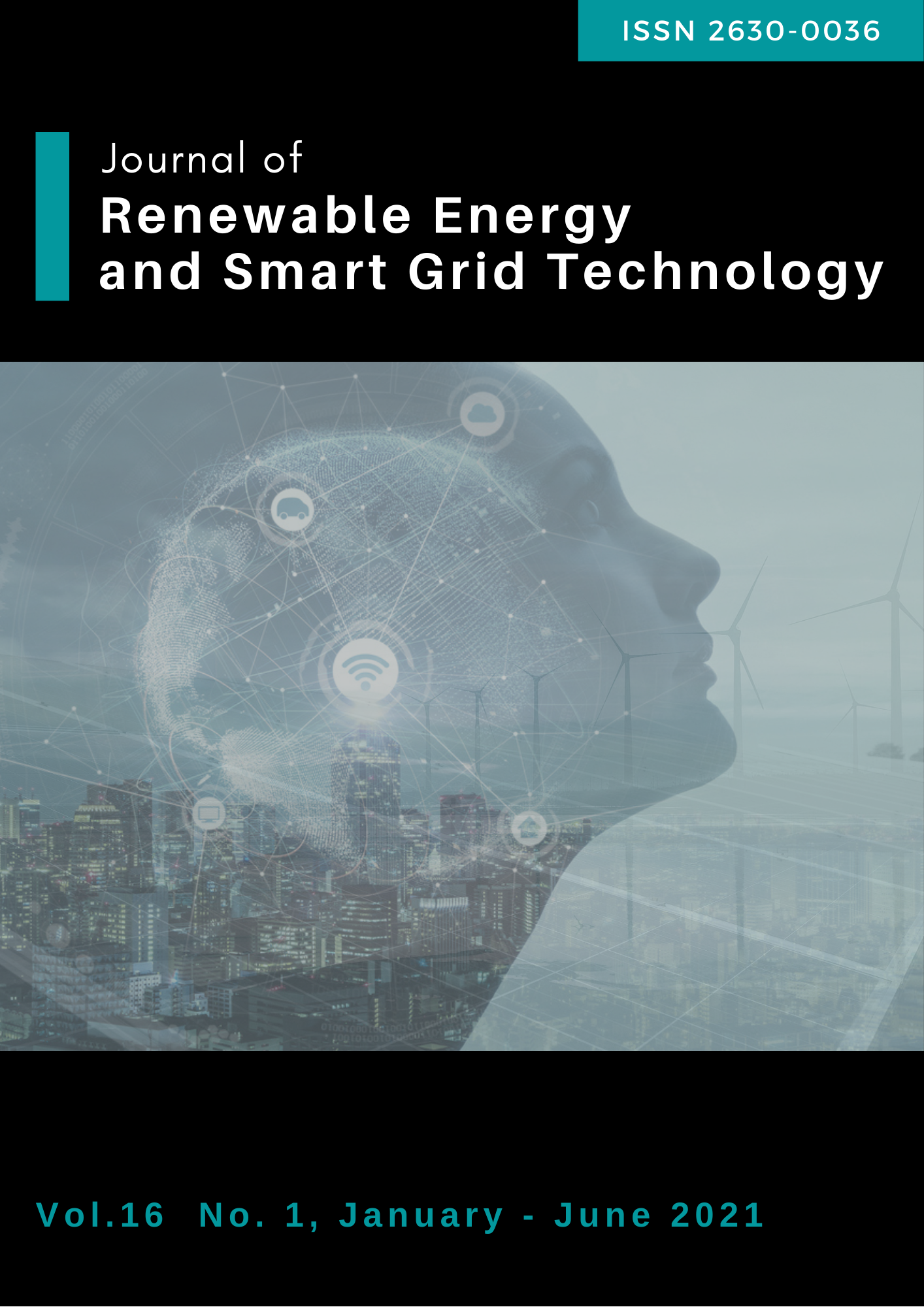Development of a Household Scale Solar Dryer: Performance Evaluation and ARX Modeling
Keywords:
Household Scale Solar Dryer, Drying of Banana, ARX Modeling, Experimental PerformanceAbstract
This paper compared the results of an actual experimental study and an ARX modeling study on the performance of a household scale solar dryer. This is a low-loading capacity dryer for drying bananas for household consumption and not for commercial production. The ARX model is simple but is more complete than a normal auto-regressive models because it can be based not only the previous time-series data, but also on exogenous variables. The ARX model prediction of the moisture content of the bananas compared with the experimentally measured values was good. Hence this model can be applied in predicting operational performances and in designing the controllers for drying processes.
References
Bala, B.K. (1998). Solar Drying Systems. Udaipur, Agrotech Publishing Academy.
Mühlbauer, W. (1986). Present status of solar crop. Energy in Agriculture, 5, 121-137.
Soponronnarit, S. (1995). Solar drying in Thailand. Energy for Sustainable Development, 2(2), 19-25.
Ramana Murthy, M. V. (2009). A review of new technologies, models and experimental investigations of solar driers. Renewable and Sustainable Energy Reviews, 13(4), 835-844.
Sharma, A., Chen, C., & Lan, N. V. (2009). Solar-energy drying systems: A review. Renewable and Sustainable Energy Reviews, 13(6), 1185-1210.
Fudholi, A., Sopian, K., Ruslan Alghoul, M. M., & Sulaiman, M. (2010). Review of solar dryers for agricultural and marine products. Renewable and Sustainable Energy Reviews, 14(1), 1-30.
Janjai, S., & Bala, B. K. (2012). Solar drying technology. Food Engineering Reviews, 4(1), 16-54.
Kumar, M., Sansaniwal, S. K., & Khatak, P. (2016). Progress in solar dryers for drying various commodities. Renewable and Sustainable Energy Reviews, 55, 346-360.
Mustayen, A. G. M. B., Mekhilef, S., & Saidur, R. (2014). Performance study of different solar dryers: A review. Renewable and Sustainable Energy Reviews, 34, 463-470.
Udomkun, P., Romuli, S., Schock, S., Mahayothee, B., Sartas, M., Wossen, T., Njukwe, E., Vanlauwe, B., & Müller, J. (2020). Review of solar dryers for agricultural products in Asia and Africa: An innovation landscape approach. Journal of Environmental Management, 268, 1-14.
Janjai, S. (2017). Solar Drying Technology. Nakhon Pathom, TH: Petkasem Publishing Company (in Thai).
Mühlbauer, W., Hofacker, W., Müller, H.-M., & Thaler, M. (1981). Die kaltlufttrocknung von Weizen unter energetischen und mikrobiologischen Aspekt. Grundlagen der Landtechnik, 31,145-154.
Brueckner, M., Dabla-Norris, E., Gradstein, M., & Lederman, D. (2018). The rise of the middle class and economic growth in ASEAN. Journal of Asian Economics, 56, 48-58.
Khattab, N. M. (1996). Development of an efficient family size solar dryer. Energy Sources, 18, 85-93.
Ratti, C., & Mujumdar, A. S. (1997). Solar drying of foods: Modeling and numerical simulation. Solar Energy, 60, 151–157.
Janjai, S., Lamlert, N., Intawee, P., Mahayothee, B., Boonrod, Y., Haewsungcharern, M., & Müller, J. (2009). Solar drying of peeled longan using a side loading type solar tunnel dryer: Experimental and simulated performance. Drying Technology, 27(4), 595-605.
Guo, Y., Nazarian, E., Ko. J., & Rajukar, K. (2014). Hourly cooling load forecasting using time-indexed ARX models with two-stage weighted least square regression. Energy Conversion and Management, 80, 46-53.
Chen, H., Du, Y., & Jiang., J. N. (2005, June 16). Weather sensitive short-term load forecasting using knowledge based ARX model. IEEE Power Engineering Society General Meeting, 2005, San Francisco, CA, USA.
Yun, K., Luck, R., Mago, P. J., & Cho, H. (2012). Building hourly thermal load prediction using an indexed ARX model. Energy and Buildings, 54, 225 -233 .
Casanova-Pelaez, P.J., Cruz-Peragon, F., Palomar-Carmicero, J. M., Dorado, R., & Lopez-Garcia, R. (2012). RBF-ARX model of industrial furnace for drying olive pomace. Energy and Environment, 64, 106-112.
Janjai, J., & Mahayothee, B. (2017). Development of dried banana production in a dried banana community of Bangkratum District, Phitsanulok Province. Veridian E-Journal, Science and Technology Silpakorn University, 3(6), 310-322.
Janaji, J., & Keawprasert, T. (2006). Design and performance of a solar tunnel dryer with a polycarbonate cover. International Energy Journal, 7(13), 187-194.
Janjai, S., Laksanaboonsong, J., Nunez, M., & Thongsathitya, A. (2005). Development of a method generating operational solar radiation maps from satellite data for a tropical environment. Solar Energy, 78, 739-751.
Blaifi, S. A., Moulahoum, S., Taghezouit, B., & Saim, A. (2019). An enhanced dynamic modeling of PV module using Levenberg-Marquardt algorithm. Renewable Energy, 135, 745-760.
O’Callaghan, J. R. O., Menzies, D. J., & Bailey, P. H. (1971). Digital simulation of agricultural drier performance. Journal of Agricultural Engineering Research, 16, 223 -244 .
Downloads
Published
How to Cite
Issue
Section
License
All copyrights of the above manuscript, including rights to publish in any media, are transferred to the SGtech.
The authors retain the following rights;
1. All proprietary rights other than copyright.
2. Re-use of all or part of the above manuscript in their work.
3. Reproduction of the above manuscript for author’s personal use or for company/institution use provided that
(a) prior permission of SGtech is obtained,
(b) the source and SGtech copyright notice are indicated, and
(c) the copies are not offered for sale.









